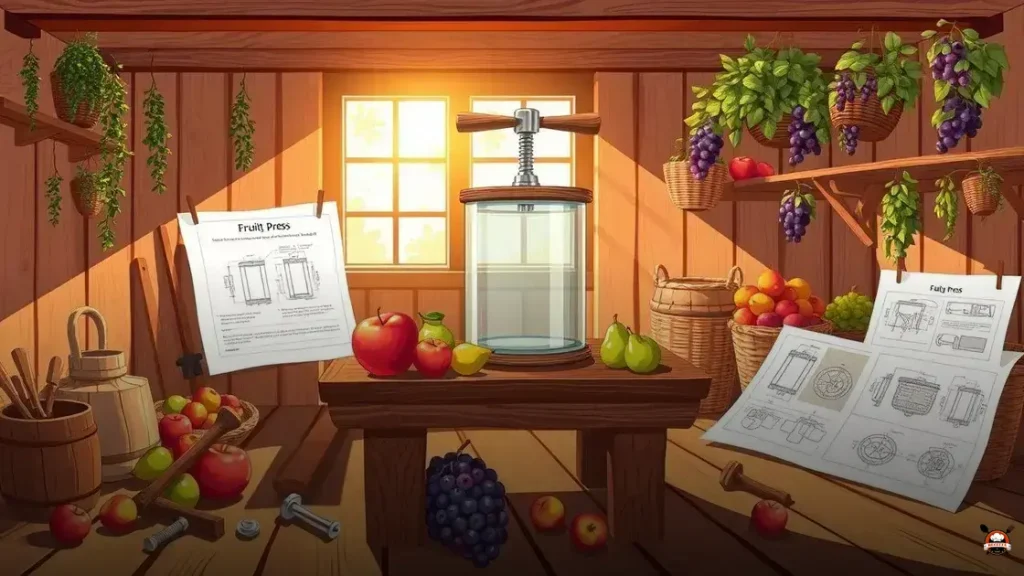Índice do Conteúdo
Understanding the Basics of a Fruit Press
A fruit press is an essential tool for anyone interested in making homemade juices, ciders, or wines. It operates by applying pressure to fruits, extracting their juices efficiently. To build a fruit press, you need to understand its basic components, which typically include a frame, a pressing plate, and a collection container. Each part plays a crucial role in the overall functionality of the press, ensuring that you can maximize juice extraction while minimizing waste.
Materials Required for Building a Fruit Press
When considering how to build a fruit press, selecting the right materials is vital. Common materials include wood for the frame, metal for the pressing plate, and a food-safe container for juice collection. You may also need screws, bolts, and a hydraulic jack or a manual screw mechanism for applying pressure. Choosing durable and food-safe materials ensures that your fruit press will last for years and produce safe, high-quality juice.
Designing Your Fruit Press
The design of your fruit press can significantly impact its efficiency and ease of use. A simple design often consists of a rectangular frame with a removable pressing plate. The pressing plate should fit snugly within the frame to prevent any leakage during the pressing process. Additionally, consider incorporating a spout on the collection container to facilitate easy pouring of the extracted juice. Sketching your design before starting construction can help visualize the final product.
Step-by-Step Construction Process
To effectively build a fruit press, follow a step-by-step construction process. Start by cutting the wood for the frame to the desired dimensions. Assemble the frame using screws or bolts, ensuring it is sturdy enough to withstand the pressure applied during juicing. Next, create the pressing plate, which should be slightly smaller than the frame to allow for easy removal. Finally, attach the collection container securely beneath the pressing plate to catch the juice.
Incorporating a Pressing Mechanism
The pressing mechanism is a critical component of your fruit press. You can choose between a hydraulic jack or a manual screw mechanism, depending on your preference and budget. A hydraulic jack allows for greater pressure with less effort, making it ideal for larger batches of fruit. On the other hand, a manual screw mechanism is more affordable and can be just as effective for smaller quantities. Ensure that the mechanism is securely attached to the frame for safety during operation.
Testing Your Fruit Press
Once your fruit press is assembled, it’s essential to test it before using it for actual fruit pressing. Start by pressing a small batch of soft fruits, such as apples or pears, to evaluate the efficiency of juice extraction. Monitor the pressure applied and check for any leaks in the assembly. This testing phase will help you identify any adjustments needed to improve the performance of your fruit press.
Maintenance Tips for Longevity
To ensure your fruit press remains in optimal condition, regular maintenance is necessary. Clean all components thoroughly after each use to prevent residue buildup, which can affect the taste of future batches. Inspect the pressing mechanism for any signs of wear and tear, and lubricate moving parts as needed. Storing your fruit press in a dry, cool place will also help prolong its lifespan and maintain its functionality.
Common Mistakes to Avoid
When learning how to build a fruit press, it’s important to be aware of common mistakes that can hinder its effectiveness. One frequent error is using inadequate materials that cannot withstand the pressure applied during juicing. Additionally, neglecting to test the press before use can lead to unexpected issues. Always take the time to plan, test, and refine your design to ensure a successful fruit pressing experience.
Exploring Advanced Features
For those looking to enhance their fruit press, consider adding advanced features such as adjustable pressure settings or a built-in filtration system. Adjustable pressure allows for more control over the juicing process, accommodating different types of fruits and desired juice clarity. A filtration system can help separate pulp from juice more efficiently, resulting in a smoother final product. These enhancements can elevate your fruit pressing experience and yield better results.




